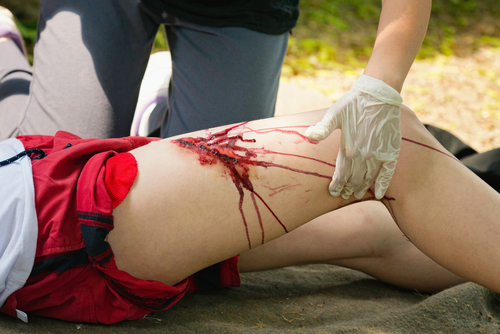
Excessive blood loss does not just happen externally when the skin is broken. Blood can be lost inside the body as well, which is called internal bleeding.
The big problem in both is recognising that severe blood loss is possible or actually happening. It’s best to assume the worst and treat as if there is severe blood loss. It is very hard to work out how much blood has been lost with an external bleed, and even harder with an internal bleed. It is also difficult to assess blood loss as different people will react in different ways. Some of these can cover up signs and symptoms right up until it gets very serious. Things that can affect the way signs and symptoms show include age, size, weight, underlying medical conditions, their fitness and any medication they are taking.
You need to get as much information as possible about the history of what happened. Then assess the mechanism of the injury. Of course, if there is an obvious wound and blood is being lost, do what you can to stop that bleed as soon as possible. Things to look out for are:
- Pale, cold and sweaty skin
- Breathing rates of over 20 breaths per minute
- Thirst
- Pulse of over 100 beats per minute
- Altered mental state (anxious, confused, drowsy, restless)
- Unconsciousness
Blood Loss Treatment
First, call the emergency services.
- Treat external bleeding and try to identify if there is internal bleeding.
- Lay them down and raise their legs if possible.
- Keep them warm and monitor their consciousness and vital signs.
For more information on training courses, visit our “Courses” page which also includes our First Responder and First Person on Scene (FPOS) Courses. If you have any queries, don’t hesitate to contact us via our website or call us on 01206 805359.
